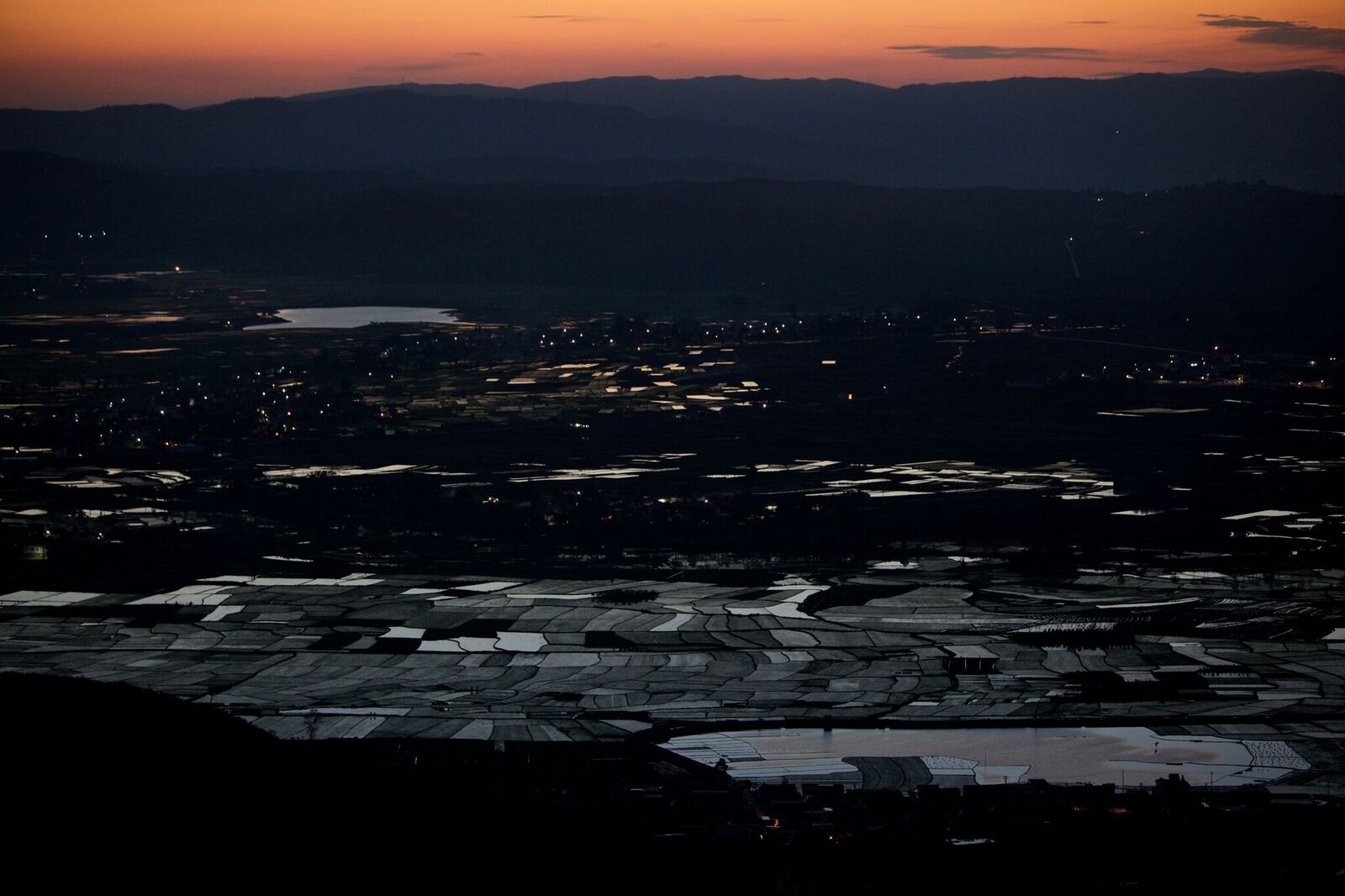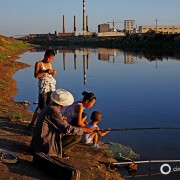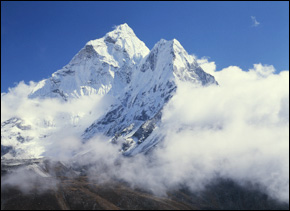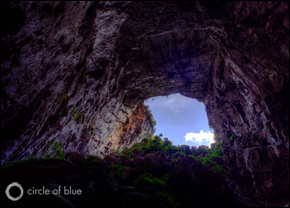Connecting Caves, Karst Landscapes and Climate Around the World
Environmental health expert Chris Groves explains how caves and karst landscapes hold clues about earth’s climate.

Located in Yunnan, China, Mengzi County resides atop a fertile valley basin. Mengzi’s landscape holds many karst formations, which can serve as time capsules of an area’s environmental history. Photo © J. Carl Ganter / Circle of Blue
It turns out that caves do a good job of providing significant answers. Those that contain animal fossils and records of ancient humans, for example, have been shown to have great value for understanding climate change and past environmental conditions.
Stalactites and stalagmites, for example, increase in size from the slow deposition of minerals that come from that water drips through cave ceilings over thousands of years. The chemistry of the minerals reflects the environmental conditions when they were deposited.
A cross section of a stalactite shows a series of concentric rings, much like tree rings, with the oldest layers at the center. Sophisticated chemical analysis of the mineral composition at different distances from the center — and thus different ages — dates the deposition and provides other information. Certain properties of the oxygen atoms within the minerals provide clues about the temperature in the cave at the time of deposition, which is related to the mean annual temperature on the surface above the cave system.
Stalactites and similar formations also provide insight about the vegetation in the region above the cave. Growth rates of the cave formations reflect climatic variations, including how wet or dry the area was. As the climate changed over thousands of years, with temperatures fluctuating up and down, details were recorded in the structure, size and composition of the caves.
Another area of scientific study is understanding how the dissolving of limestone bedrock influences levels of carbon dioxide in the atmosphere. The rate at which CO2 gas concentrations fluctuate in the atmosphere depends in a big way on how much CO2 is pumped into the atmosphere each year by human activities. The overall net affect of CO2 on the atmosphere depends also on other processes that add or remove the gas, such as plant growth and interactions with the world’s oceans.
Roughly 15 percent of earth’s land area is covered by karst landscapes. CO2 gas from the atmosphere dissolves naturally in water to form weak carbonic acid, which is great at dissolving limestone bedrock that forms the caves, holes and underground channels of the karst formation (see stunning pictures of China karst formations in our slideshow). Although the details of the chemistry are complex, a net result of this process is that some carbon that starts off as CO2 gas in the atmosphere ends up as dissolved carbon in the water that flows out of the caves at springs and eventually runs into the oceans. Although the overall impact is small compared to burning fossil fuels, scientists are working to understand the magnitude of this carbon transfer and how it might be balanced by related mineral interactions in the oceans.
Chris Groves is director of the China Environmental Health Project of the Hoffman Environmental Research Institute at Western Kentucky University.
Circle of Blue provides relevant, reliable, and actionable on-the-ground information about the world’s resource crises.






